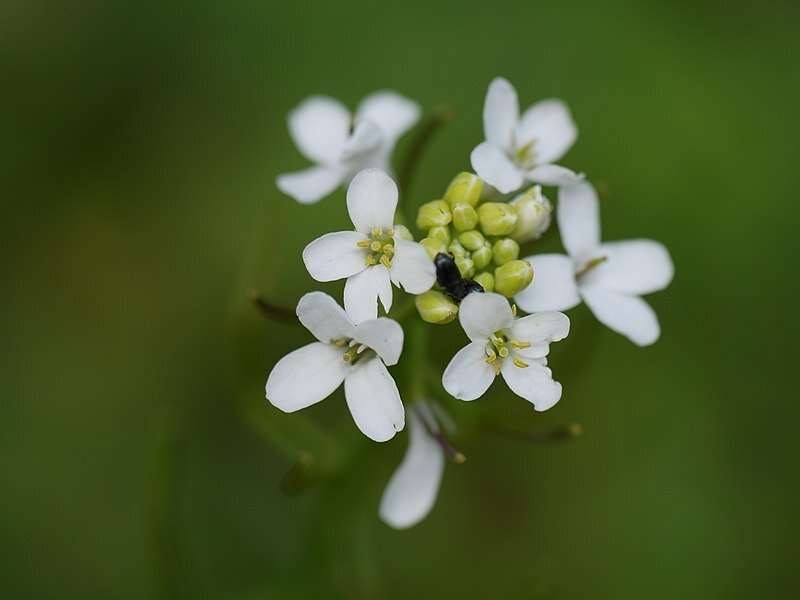rRNA modification found to play significant role in thermospermine-mediated development in Arabidopsis thaliana

Polyamines were first discovered in animal semen by Anthony van Leeuwenhoek in 1678, and subsequently found in bacteria, yeast and plants. In Arabidopsis thaliana, putrescine (Put), spermidine (Spd) and spermine (Spm) are the main types of free polyamines, and once considered as a class of phytohormones that regulate various aspects of plant development and environmental adaptation. However, the contents of endogenous Put, Spd and Spm are several orders of magnitude higher than those of classic phytohormones, and the molecular mechanisms of polyamine-mediated developmental and stress responses remain elusive.
Thermospermine (T-Spm) was first identified in thermophilic bacteria in 1979 and thereafter in plants. Although T-Spm and Spm are structural isomers, their synthesis-deficient mutants displayed distinctly different phenotypes in A. thaliana, suggesting that T-Spm and Spm regulate plant development through specific signaling pathways.
A research group led by Prof. Li Jiayang from the Institute of Genetics and Developmental Biology (IGDB) of the Chinese Academy of Sciences has revealed that snoRNP complexes play significant roles in T-Spm-mediated development in A. thaliana. The study was published in Science China Life Science on Nov. 15.
In this study, the researchers found that the content of endogenous T-Spm, which is much lower than Put, Spd and Spm, is comparable to that of some classic phytohormones including salicylic acid. They further found a nodule-like structure around the junction area connecting the shoot and root of T-Spm biosynthetic mutant acl5.
To investigate the molecular mechanism of T-Spm-mediated root nodule-like structure, the researchers screened for suppressors of acl5 nodule structure (san), and obtained more than 50 suppressors. Through in-depth study of san1 and san2, they found that SAN1 and SAN2 encode NAP57 and NOP56, the core components of the box H/ACA and C/D snoRNP complexes, respectively.
SnoRNPs comprise two families, the box H/ACA and C/D snoRNPs, which catalyze pseudouridylation and 2'-O-methylation of pre-rRNA, respectively. Box H/ACA snoRNPs are formed by box H/ACA snoRNAs and four core proteins including rRNA pseudouridine synthase NAP57, Gar1, Nop10, and Nhp2, while box C/D snoRNPs are formed by box C/D snoRNAs and four core proteins including two paralogous scaffolding proteins NOP56 and NOP58, the methyltransferase fibrillarin (FIB), and the RNA-binding protein L7Ae.
Previous studies found that snoRNP complexes are highly conserved in all eukaryotes. Defects in snoRNPs have detrimental effects on rRNA modification and development in animals, but the functions and mechanisms of snoRNPs in plant development are still limited.
The researchers examined the pseudouridylation levels of rRNA by mass spectrometry analysis, which allows quantitative detection of changes in pseudouridylation levels. The acl5 mutant showed a similar pseudouridylation level as the wild type, whereas the rRNA pseudouridylation in the acl5 san1 double mutant was ~57% of that in the acl5 mutant, indicating that the mutation in SAN1/NAP57 leads to functional impairment of the box H/ACA snoRNP complex.
The researchers also detected the 2'-O-methylation of rRNA by high-throughput sequencing, which is capable of detecting 2'-O-methylation in a site-specific manner. Compared with the wild type, the acl5 mutant showed normal levels of the 2'-O-methylation at different sites of 5.8S, 18S and 25S rRNAs, but the acl5 san2 double mutant displayed a dramatic reduction in the overall level of 2'-O-methylation, indicating that the san2 mutant compromises the function of box C/D snoRNP complex.
In summary, this study found the link between rRNA modifications and T-Spm-mediated development in A. thaliana, providing a new insight for the function of T-Spm. Because the content of endogenous T-Spm is similar to that of traditional phytohormones and T-Spm regulates a variety of growth and development processes, T-Spm may function as a new phytohormone.
Further analyses of more san suppressors and in-depth studies of snoRNPs will shed light on the signaling pathways of T-Spm in regulating growth and development.
More information: Xilong Li et al, SnoRNP is essential for thermospermine-mediated development in Arabidopsis thaliana, Science China Life Sciences (2022). DOI: 10.1007/s11427-022-2235-4
Journal information: Science China Life Sciences
Provided by Chinese Academy of Sciences


















